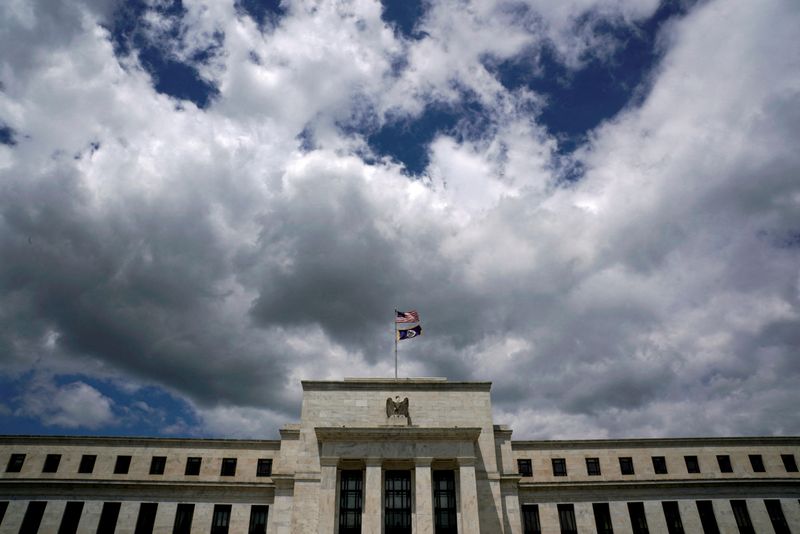By Pete Schroeder and Michael S. Derby
(Reuters) - The Federal Reserve on Wednesday said a funding lifeline created for banks last year after the collapse of Silicon Valley Bank threatened to spark a wider financial crisis would close as scheduled in March.
The Fed also raised the interest rate on new loans from the Bank Term Funding Program (BTFP) for the remainder of its life, effectively ending what had become a popular and profitable arbitrage opportunity for U.S. lenders, which analysts said should deter fresh borrowing.
The sun-setting of the program on March 11 had been signaled by Fed officials as fear in the banking system abated.
The BTFP "was really designed in that emergency situation," Michael Barr, the Fed's vice chair for supervision, said earlier this month, referring to the banking sector panic triggered by SVB's rapid collapse. "It was designed for that emergency to say, We want to make sure that banks and creditors of banks and depositors (in) banks understand that banks have the liquidity they need."
The Fed launched the BTFP amid a historic run on deposits and other market stress after Silicon Valley Bank and Signature Bank (OTC:SBNY) failed in lightning-fast fashion, tapping emergency lending powers the central bank can roll out - with the approval of the Treasury secretary - under "unusual and exigent circumstances."
While the Fed said it would continue making new loans until the program concluded, it said that as of Thursday it was raising the interest rate banks would pay for any new Fed lending. The Fed said the interest rate on new loans would be no lower than the interest rate on reserve balances on the day of the loan. The end result is a nearly 50-basis-point jump in new borrowing costs; the BTFP loan rate was 4.93% on Tuesday, while reserve balances currently reap 5.40%.
Prior generous terms helped drive use of the program, as usage ground steadily higher despite no real signs of market distress. Loans outstanding as of Jan. 17 stood at $161.5 billion, according to Fed data, and the average weekly increase over the last six weeks of nearly $5.6 billion is the highest since early May.
But it also meant banks could borrow from the BTFP and deposit funds back at the Fed, earning a higher rate from the interest the central bank pays on reserve balances.
Steven Kelly, associate director of research at the Yale School of Management's Program on Financial Stability, said before the expiration was announced he suspects the Fed was "not happy" with the current state of BTFP activity as it had found itself providing hedges to banks at a time when they didn't need them.
WINDING DOWN
While the end of the program had been expected by many in markets, the change in the borrowing rate, as well as the timing of the action, coming in the central bank's quiet period ahead of a monetary policy meeting next week, caught observers off guard, even as they understood the reason for the change.
Derek Tang, an analyst at forecasting firm LH Meyer, said that the BTFP borrowing rate in place before Wednesday's change "gave banks free profits, which is not a good look" politically.
Tang also warned that tweaks like the one made by the Fed also come with costs to future support efforts: "Changes like this after the program has gone on for a while are unusual because they can undermine the trust people have in future programs."
Where things go next is unclear. The next round of Fed data that will capture changes to the program is due on Feb. 1, and it's quite likely that the rate change on the BTFP will arrest the rise in borrowing and may even shrink it given the changed economics.

"Our assumption is that new borrowing will fall essentially to zero" starting Thursday, said Wrightson ICAP (LON:NXGN) analysts. Looking forward, a smaller BTFP points to a faster shrinkage of the Fed's balance sheet, the firm said, noting that credit extensions offered by the Fed "are likely to run off faster in 2024 than we had anticipated."
(This story has been refiled to restore dropped word 'to' to the headline)